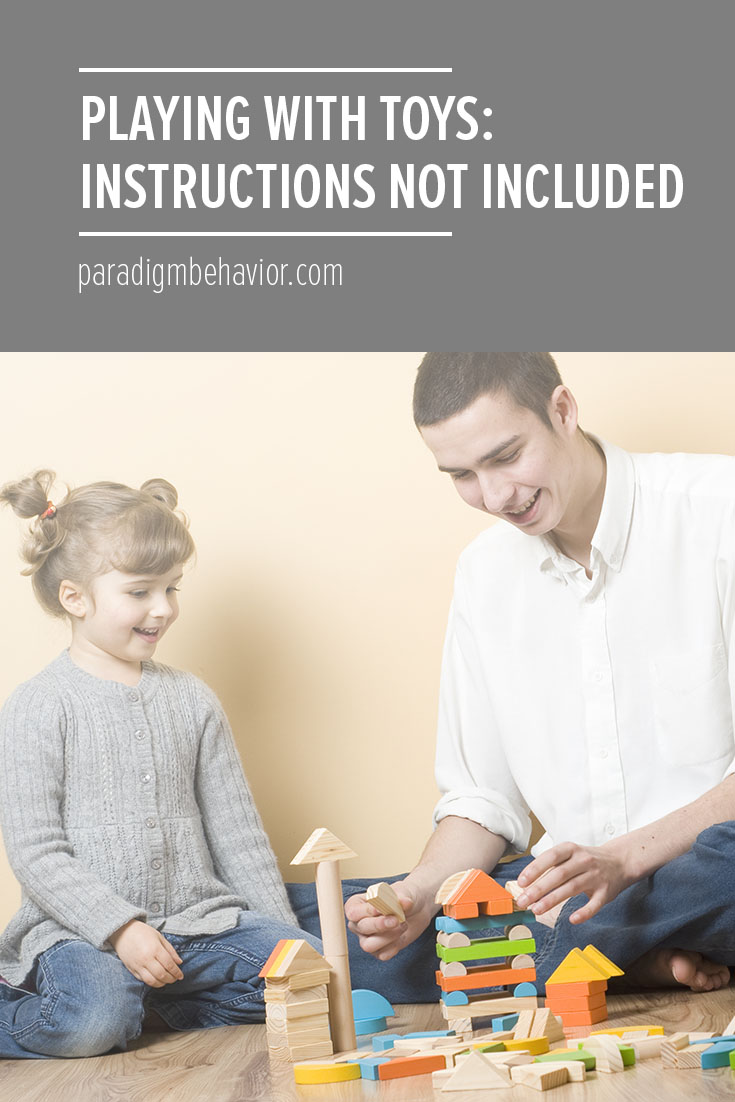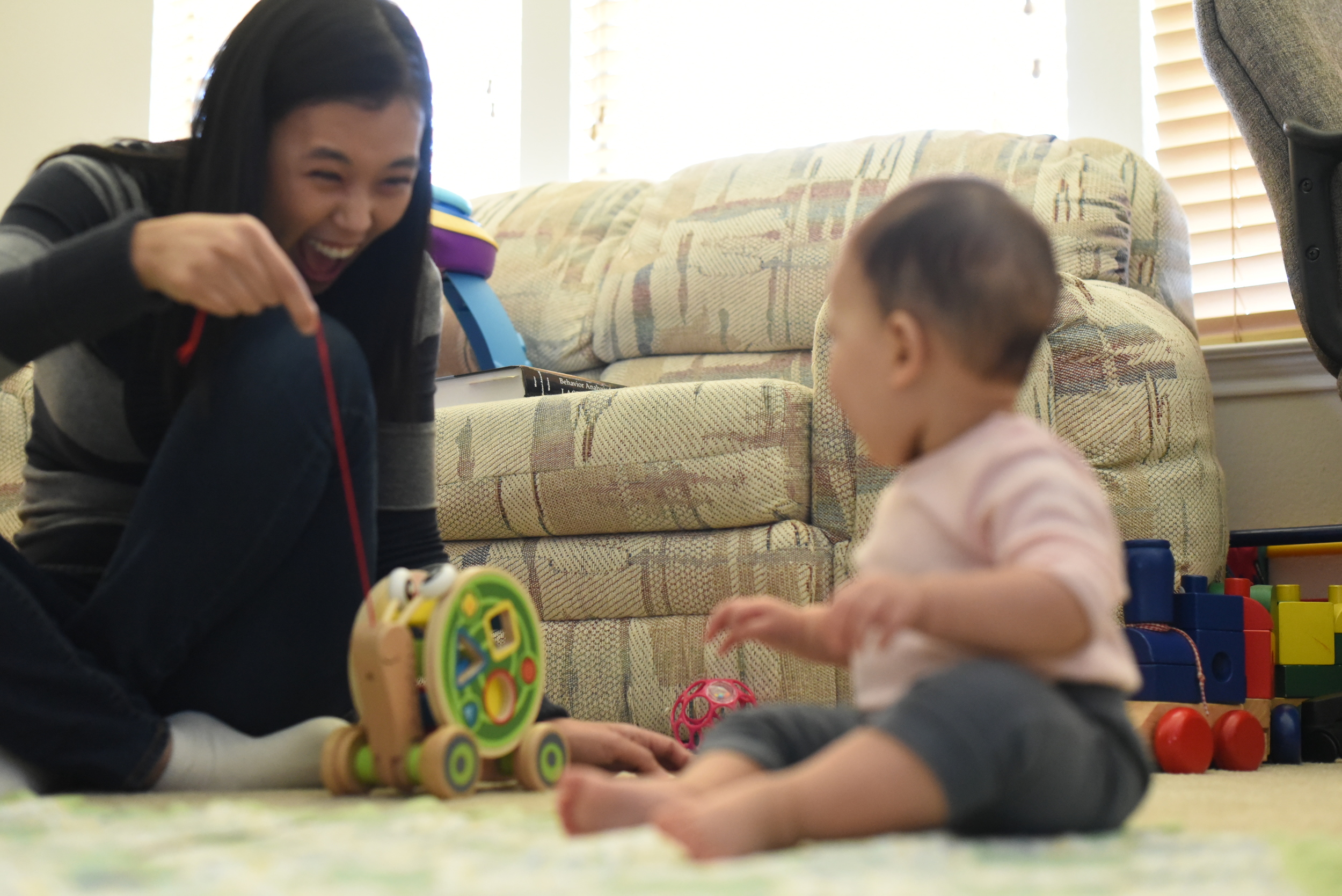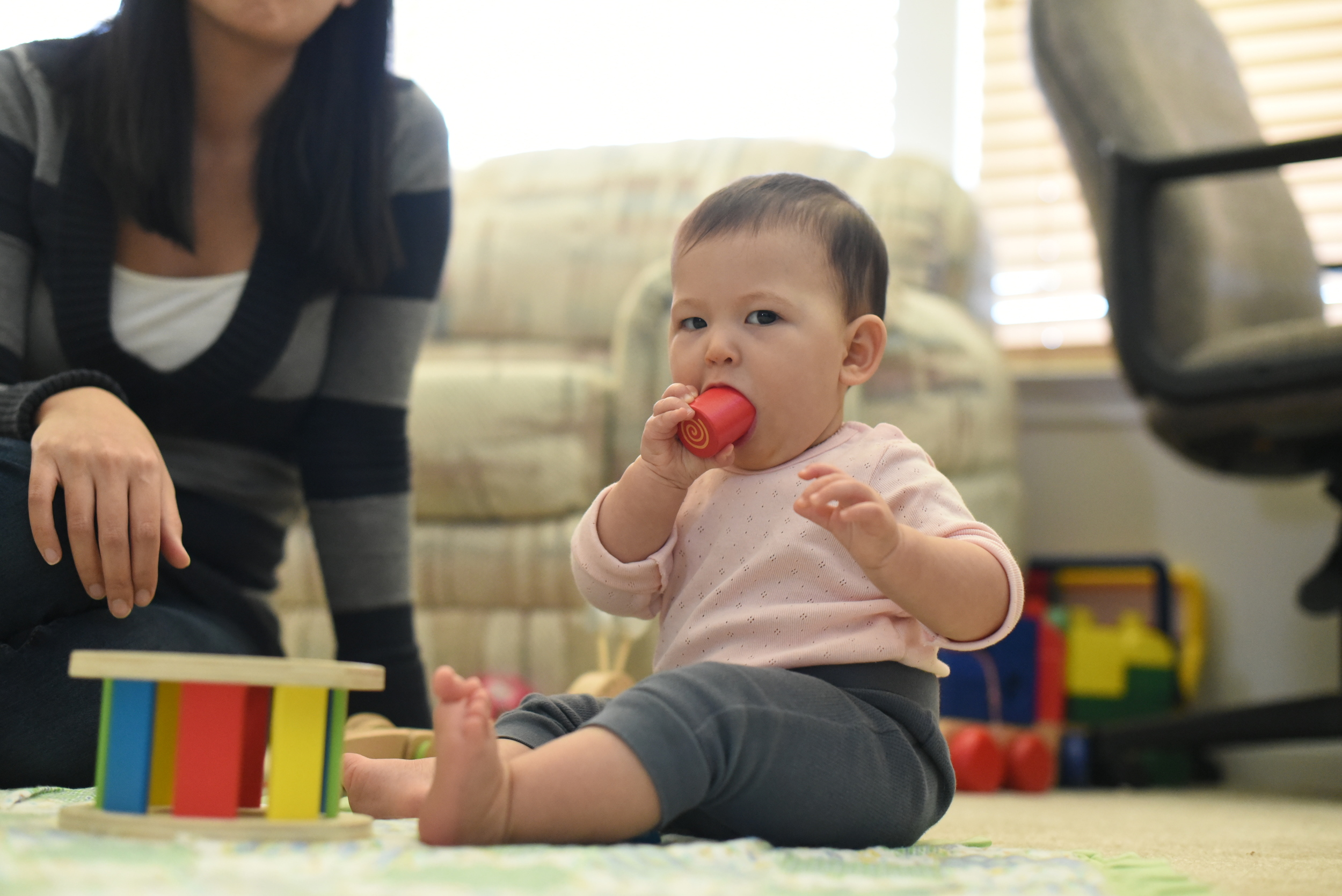You’d expect toys to come with instructions. However, more often than not, I’m faced with a toy with no clue how to play with it. It’s even worse when I haven’t even seen whatever movie the toy is from! For me, the hardest part was overcoming the embarrassment of being silly and talking out-loud to myself. I realized quickly it wasn’t about me, though. It was about teaching my client how to play. I wasn’t just being “silly” when acting like a frog. I was modeling playfulness. Frogs can jump really high up in the air, perhaps over the other animals. Did you see what I did there? I showed the client that:
1. Frogs jump
2. You can jump up and down
3. Frogs say “ribbit”
4. You can jump over the (fill in the blank with various animals)
After modeling play, your child may begin to request for you to frog jump because it is very entertaining and silly, or they may begin to imitate for the same reasons. I’d be proud and happy with either response because:
1. Your child communicated a request!
2. Your child imitated play!
In ABA therapy, I loosely refer to play as natural environment training (NET) because the natural environment for children is generally playtime. The literature refers to NET as using the natural environment as teaching opportunities. For example, making a sandwich would be taught in the kitchen rather than the living room or classroom table. For the purpose of this blog, NET will be described in terms of play and exposing your child to language and actions associated with play.
So, let’s break down the components of play. Instead of giving the toy to your child and saying “here you go!” we will need to show them how fun this new toy (or old) can be. I mentioned earlier that we need to do 2 things: be silly, and talk out loud.
Let’s start with being silly. What kind of actions can you do with the item? Are there cause/effect items such as pressing buttons to play music, pulling the trigger to release bubbles, or throwing the ball on the floor to bounce really high?
With each action, think about what you would say out loud to describe that action. For example, to bounce the ball you might say “bounce the ball,” “bounce higher,” “wow, look at it go UP!” “okay, your turn,” or “boingy-BOING.”
It may help to write these out or at least visualize what you can do with this one item. Your child will show interest if you see they are focused on your silly actions and/or sounds by keeping their eyes on the toy or you. They may imitate you by saying “BOING” because the word is naturally silly, but they may also use it as a request (a.k.a mand training). If they say “BOING,” bounce the ball immediately. If they like how you say the word, wait for them to look at you then say it in your silliest voice while bouncing the ball. Notice that I mentioned “while bouncing the ball.” Your child may be attracted to your silly voice, but not so much the ball. If this is the case, bouncing the ball while you say the word will hopefully pair the two together. Otherwise, your ball might be collecting dust while your child requests for you say silly words all day long.
For ideas to play with toys in your own home, you can visit the playroom and download the play guides for free! If you find a certain toy or activity that is highly motivating for your child and feel others will also benefit, submit your own play guide to share with other families. The play guide is broken into 5 categories:
1. Play ideas: a list of actions for the toy
The other four categories are categories of language called “verbal operants.” To sum it up, each “operant” will you give ideas of what to say out loud to model for your child.
2. Mand: Ways your child can request for the item or action
3. Tact: Ways your child can label or comment about the item or action
4. Listening Responding: Providing your child simple directions to perform
5. Intraverbals: Typically fill-in the blanks to initiate back and forth conversation
Here is an example of modeled play with my daughter. She was 6 months old in these photos and has not yet said her first words. I know she adores this shape sorter by HAPE because her eyes are fixed on the snail when I pull the snail back and forth by the string.
Instead of letting her constantly watch me pull the toy back and forth, I’ll stop the snail on my far right or left and say “ready, set…” as a fill in statement (intraverbal). When she gives me eye contact, I’ll immediately say “GO!” while dragging the snail to the other end.
I may say other comments like “wee!” or “look at it go.” Other ways I may vary this activity is that I may say “fast” and tug the string quickly or vice versa with “slow.” Although she hasn’t talked, I’m exposing her to different components of language and demonstrating different ways to play with the toy. Right now she mouths the blocks, but I will comment on which block she’s mouthing (red circle)!





